Mold can be a serious health hazard, especially for vulnerable populations such as infants. As a parent, it’s crucial to understand how mold can impact the health of your baby. In this comprehensive guide, we’ll cover the various ways that mold can affect babies, from respiratory problems to mold-related illnesses, and offer tips on how to prevent mold exposure.
If you’re wondering, “How does mold affect babies?” then keep reading to learn more.
Effects of Mold on Infants
Infants are particularly vulnerable to the health risks posed by mold exposure. Mold can cause a range of health problems in babies, from mild allergies to serious respiratory issues and even mold-related illnesses.
Respiratory Problems
Babies who are exposed to mold are at increased risk of developing respiratory problems. Mold spores can irritate the airways, leading to coughing, wheezing, and difficulty breathing. In some cases, mold exposure can trigger asthma attacks in babies who are already prone to the condition.
| Signs of respiratory problems in babies | Possible respiratory problems caused by mold |
|---|---|
| – Rapid or shallow breathing | – Coughing |
| – Wheezing | – Shortness of breath |
| – Chest tightness | – Asthma attacks |
Allergic Reactions
Some babies may also experience allergic reactions when exposed to mold. These reactions can include sneezing, watery eyes, and skin irritation. While allergies caused by mold exposure are typically not life-threatening, it is important to address them promptly to prevent further discomfort for the baby.
| Signs of allergic reactions in babies | Possible allergic reactions caused by mold |
|---|---|
| – Sneezing | – Runny or stuffy nose |
| – Watery eyes | – Itchy eyes, nose, or throat |
| – Skin rash or hives | – Skin irritation |
It is important to note that babies with a family history of allergies or asthma may be at higher risk of experiencing mold-related allergy symptoms.
Signs and Symptoms of Mold Exposure in Babies
It’s important for parents to be aware of the signs and symptoms of mold exposure in their babies. The following are common indicators:
- Respiratory symptoms: These include coughing, wheezing, and difficulty breathing. If your baby seems to be struggling to breathe or has a persistent cough, it’s important to seek medical attention.
- Skin rash: A rash that persists or seems to be worsening could be a sign of mold exposure. Be sure to keep an eye out for any changes in your baby’s skin.
- Eye irritation: Watery, itchy eyes can also be a symptom of mold exposure. If your baby seems to be rubbing their eyes frequently or experiencing discomfort, mold may be the cause.
- Nasal congestion: If your baby seems to be congested or has trouble breathing through their nose, it may be due to mold exposure.
It’s important to note that these symptoms can also be caused by other factors, such as allergies or viral infections. If you’re unsure about the cause of your baby’s symptoms, it’s always best to consult with a medical professional.
Respiratory Problems in Babies Due to Mold
Babies are particularly susceptible to respiratory problems caused by mold exposure, as their developing respiratory systems are more vulnerable to irritants than those of older children and adults. When mold spores are inhaled, they can trigger a range of respiratory symptoms in infants, including coughing, wheezing, and difficulty breathing.
Mold can also exacerbate pre-existing respiratory conditions such as asthma, making it particularly important for parents to take steps to prevent mold growth in their homes and other environments where their babies spend time.
| Respiratory symptoms of mold exposure in infants |
|---|
| Coughing |
| Wheezing |
| Difficulty breathing |
If your baby is experiencing any of these respiratory symptoms, it’s important to seek medical attention promptly. A healthcare professional can help determine if mold exposure is the cause of your baby’s symptoms and recommend appropriate treatment.
To prevent respiratory problems caused by mold, it’s essential to address any mold growth in your home as soon as possible. This may involve repairing leaks, improving ventilation, and keeping humidity levels low. It’s also important to clean and dry any areas affected by water damage as soon as possible, as mold can begin to grow within 24-48 hours.
Allergic Reactions in Infants Caused by Mold
Babies are particularly vulnerable to mold-related health issues, including allergic reactions. When exposed to mold, infants may experience a range of symptoms that can be distressing for both the baby and their parents.
Some of the most common symptoms of mold-related allergies in babies include:
- Sneezing
- Runny nose
- Watery eyes
- Skin irritation
These symptoms can be similar to those of other respiratory and skin conditions, so it’s important to seek medical advice if you suspect your baby has been exposed to mold and is experiencing any of these symptoms.
Mold-Related Illnesses in Babies
Mold can pose a serious health risk to babies, especially if they are exposed to it for extended periods. In addition to respiratory problems and allergic reactions, mold exposure can lead to various illnesses in infants.
One of the most common mold-related illnesses is fungal infection. Babies who inhale mold spores or come into contact with them through their skin can develop fungal infections in their lungs, sinuses, or skin. These infections can cause symptoms such as coughing, fever, and skin irritation.
Another potential illness is mycotoxin poisoning, which occurs when babies ingest or inhale toxic substances produced by certain types of mold. Symptoms of mycotoxin poisoning can vary depending on the type of mold involved, but they can include nausea, vomiting, diarrhea, and neurological issues.
Babies with weakened immune systems or pre-existing health conditions may be particularly susceptible to mold-related illnesses. It is important for parents and caregivers to be vigilant about mold exposure and seek medical attention promptly if their baby shows any signs of illness.
Mold Toxicity in Babies
Mold toxicity is a serious health concern for babies. While adults can also be affected by mold toxicity, babies are particularly vulnerable due to their underdeveloped immune systems and small body size.
When babies inhale or ingest mold spores, their bodies may not be able to effectively remove these toxins, which can lead to a range of health issues. Some of the most common symptoms of mold toxicity in babies include respiratory problems, skin rashes, and gastrointestinal issues.
In some cases, mold toxicity can also lead to more severe health conditions such as neurological damage and immune system dysfunction. Therefore, it is critical for parents to take proactive measures to prevent mold growth in their babies’ living spaces.
Factors that Contribute to Mold Toxicity in Babies
There are several factors that can increase a baby’s risk of mold toxicity, including:
| Factor | Description |
|---|---|
| Poor air circulation | Stagnant air allows mold spores to accumulate and spread more easily. |
| Excessive moisture | Mold thrives in moist environments, so homes with high humidity or water damage are more prone to mold growth. |
| Indoor air pollution | Other indoor pollutants, such as secondhand smoke and household chemicals, can weaken a baby’s respiratory system and make them more vulnerable to mold toxicity. |
Long-term Effects of Mold Toxicity in Babies
If left untreated, mold toxicity can have serious long-term effects on a baby’s health. Some potential consequences of prolonged mold exposure include:
- Chronic respiratory problems, such as asthma and bronchitis
- Developmental delays
- Neurological damage
- Autoimmune disorders
- Increased risk of cancer
Therefore, it is crucial for parents to address any signs or symptoms of mold toxicity in their babies as soon as possible to prevent these long-term health consequences.
Preventing Mold Exposure in Infants
As a parent, it is crucial to create a mold-free environment for your baby to minimize the risk of mold-related health issues. Here are some practical tips and strategies that can help prevent mold exposure:
1. Control humidity levels
Mold thrives in moist environments, so it is essential to keep the humidity levels in your home under control. Use a dehumidifier to maintain humidity levels below 50% and ensure proper ventilation in areas prone to moisture buildup, such as the bathroom and kitchen.
2. Keep surfaces clean and dry
Clean and dry surfaces regularly to prevent mold growth. Use a mild detergent and warm water to clean surfaces, and ensure they are thoroughly dried afterward. Pay special attention to areas that are prone to moisture, such as windowsills, bathrooms, and kitchen counters.
3. Repair leaks and moisture issues promptly
Identify and repair any leaks or moisture issues in your home as soon as possible. Addressing them promptly can prevent mold growth and minimize the risk of mold-related health issues.
4. Use mold-resistant materials
Consider using mold-resistant materials when renovating or building your home. These materials can help prevent mold growth and make it easier to clean surfaces. Some examples of mold-resistant materials include drywall, paint, and insulation.
5. Address any signs of mold promptly
If you notice any signs of mold in your home, such as a musty smell or visible growth, address the issue promptly. Consider hiring a professional mold remediation company to help identify and remove mold from your home safely.
By following these tips and strategies, you can create a mold-free environment for your baby and minimize the risk of mold-related health issues. Remember to address any concerns or issues promptly to keep your baby healthy and safe.
Baby’s Susceptibility to Mold-Related Health Issues
Babies are among the most vulnerable members of society when it comes to mold-related health issues. There are several reasons why infants are at high risk, including their developing immune systems, small lung capacity, and higher respiratory rates.
Additionally, babies spend a lot of time indoors, where mold growth is often prevalent. They may also be exposed to mold through contaminated food or formula, which can have serious health consequences.
It’s essential for parents to take proactive measures to protect their babies’ health from mold exposure. This includes regular cleaning and maintenance of the home environment, monitoring for signs of mold growth, and ensuring proper ventilation and humidity control.
If parents suspect that their baby has been exposed to mold or is experiencing symptoms of mold-related health issues, it’s crucial to seek medical attention promptly. Early intervention can help prevent long-term health consequences and ensure the best possible outcome for the baby’s health.
FAQ – Frequently Asked Questions About How Mold Affects Babies
If you’re concerned about the impact of mold on your baby’s health, you’re not alone. Here are some answers to common questions about how mold affects babies:
Q: What are the most common symptoms of mold exposure in babies?
A: The most common symptoms of mold exposure in babies include respiratory issues such as coughing, wheezing, and shortness of breath. Skin rashes, watery eyes, and sneezing may also be indicators of mold-related health issues.
Q: Can mold affect a baby’s development?
A: Prolonged exposure to mold can potentially impact a baby’s development, particularly cognitive and neurological functions. It’s important to take steps to prevent mold exposure and address any concerns with a healthcare provider.
Q: How can I tell if my baby’s symptoms are due to mold exposure?
A: It can be difficult to determine the exact cause of a baby’s symptoms, but if there are signs of mold in your home or your baby’s environment, it’s worth investigating further. A professional inspector can test for mold and provide guidance on remediation if necessary.
Q: Are some babies more susceptible to mold-related health issues than others?
A: Yes, infants and young children are more vulnerable to the health risks of mold due to their developing immune systems and smaller airways. Babies with respiratory conditions or compromised immune systems may be particularly at risk.
Q: How can I prevent mold exposure in my baby’s environment?
A: There are several steps you can take to prevent mold exposure, including maintaining proper ventilation, controlling humidity levels, regularly cleaning and disinfecting surfaces, fixing any leaks or water damage promptly, and avoiding carpeting in areas prone to moisture.
Q: What should I do if I suspect my baby has been exposed to mold?
A: If you notice signs of mold or suspect your baby has been exposed, consult with a healthcare provider and consider having your home inspected for mold. Prompt remediation and a mold-free environment can help protect your baby’s health and well-being.









